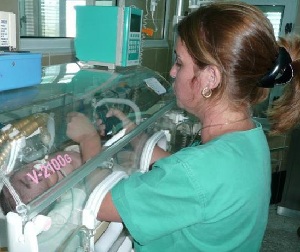 Maintaining the country’s infant mortality rate due to congenital defects at the historical low of 0.8 per thousand live births, for three consecutive years, is one of the accomplishments that brings the most pride to workers at the National Center for Medical Genetics.
Maintaining the country’s infant mortality rate due to congenital defects at the historical low of 0.8 per thousand live births, for three consecutive years, is one of the accomplishments that brings the most pride to workers at the National Center for Medical Genetics.
When the institution was founded in 2003, the rate was 1.7 per thousand live births, which has been progressively reduced by more than 50%, the clearest expression of the scope of the genetics program, which serves 95 to 99% of pregnant women and newborns in all prenatal and neonatal care programs.
Dr. Hilda Roblejo Balbuena, a specialist in Clinical Genetics, Assistant Professor, researcher, and head of Teaching and Research at this institution, said that this improvement is the result work done by the National Network of Medical Genetics Services with provincial departments and municipal services, and at the level of neighborhood polyclinics, adequately equipped, both in human and technological resources.
Also important is the fact that this institution – the national reference center for diagnosis, management, and prevention of genetic diseases and congenital defects – has managed to expand the availability of diagnoses for genetic diseases from about 40 in 2003, to more than 120 today. This has been possible with the addition of new laboratory techniques for the comprehensive study of infertile couples, also a priority for Cuban public health.
Dr. Roblejo added, “The molecular diagnosis of family breast cancer and family colon cancer, which implies the standardization of studies to identify individuals with a greater predisposition for these diseases, for preventive purposes,” constitutes another special priority for the National Center of Medical Genetics
These are pathologies that are among the leading causes of death and morbidity in Cuba. The genetic risk factors associated with the most common causes of death in all populations: cardiovascular disease and cancer, as well as reproductive disorders (infertility) … indicate the need for a genetic culture with an increasingly preventive approach, which is, at the same time, the intervention strategy recognized as the most effective in the short and medium term,” she said.
(Granma)